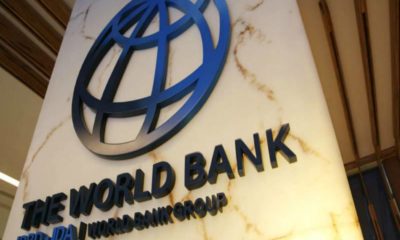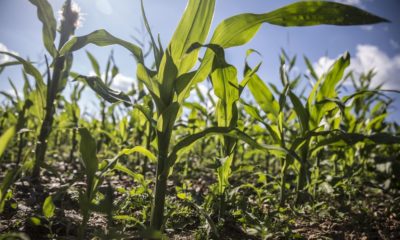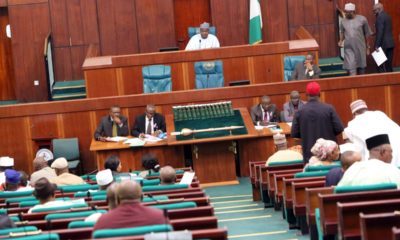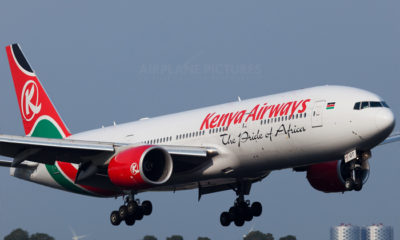Markets
Retirees Kick as Pension Operators Slash Lump Sum to 20%
Published
7 years agoon
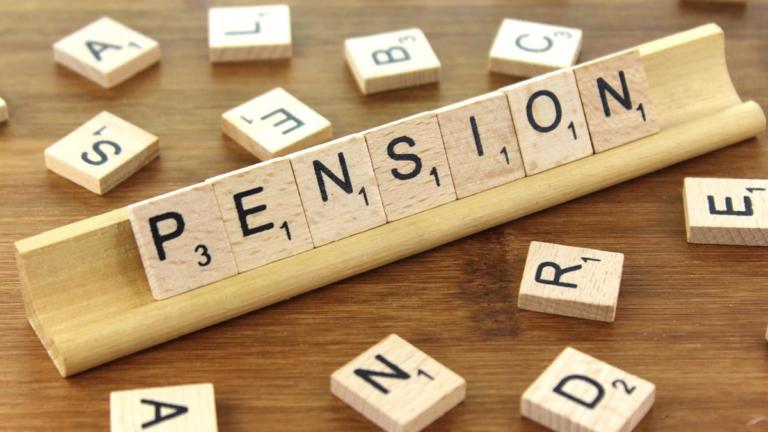
- Retirees Kick as Pension Operators Slash Lump Sum to 20%
A new template recently given to the Pension Fund Administrators by the National Pension Commission for the calculation of retirement benefits to Contributory Pension Scheme retirees has led to the reduction in lump sum being paid out and this is generating concerns among some pensioners, NIKE POPOOLA writes.
Many retirees under the Contributory Pension Scheme are daily expressing their displeasure over their inability to access at least 25 per cent of the balance in their Retirement Savings Accounts, which is contrary to their expectation, investigation has revealed.
Some retirees, who spoke to our correspondent on the development, threatened to take up their Pension Fund Administrators for introducing the initiative without making their intentions public for stakeholders to understand the implications.
According to them, the prior information made available to them was that retirees could access either 50 per cent or at least 25 per cent of their RSA balance, even when it was uncommon to see the PFAs giving out 50 per cent.
A retiree, Kayode Ibrahim, said he was disappointed when his PFAs denied him the 25 per cent lump sum payment, which he felt was his right.
He stated, “I just retired and went to my PFA last week to process my pension, but they calculated my lump sum, which amounted to 20 per cent. I rejected that money and insisted that they must give me 25 per cent minimum; they told me my monthly pensions will be lower than 50 per cent of my last salary if they should give me 25 per cent.
“Yet, the amount they want to be paying me as monthly pension is just about 18 per cent of the last salary I got before I retired. If they cannot give me a monthly pension that is worth 50 per cent of my last salary, why should they not give me my 25 per cent lump sum?”
Another retiree, James Egerue, who spoke with our correspondent, said that he retired early this year and went to his PFA to know how much he would be paid as lump sum.
He said, “They agreed to give me 25 per cent, but I did not fill the form on time. When I went back recently, I got a rude shock as they said they would not give me 25 per cent lump sum anymore, but just 20 per cent.
“Even though they offered to pay higher monthly pensions than before, the increase is insignificant because they still want to be paying me monthly pension, which is just 20 per cent of my last salary. I will write a petition against them.”
While the Part 1 Section 4(1) C old Pension Reform Act, 2004 provided that 50 per cent of the annual remuneration should be considered in retirement benefit computation, this provision was not mentioned in the amended PRA 2014.
Part III Section 7(1) A of the 2014 version of the law states, “A holder of a RSA shall upon retirement or attaining the age of 50 years, whichever is later, utilise the amount credited to his RSA for the following benefit: withdrawal of a lump sum from the total amount credited to his RSA provided that the amount left after the lump sum withdrawal or annuity for life in accordance with extant guidelines issue by the commission from time to time.”
The major parameters used in the template to calculate the monthly pensions are the date of birth, RSA balance, last salary before retirement and gender of the retiree.
Some operators, who spoke with our correspondent, said that the new template became imperative as the PFAs were overwhelmed by the number of retirees who regularly came to their offices to ask for another lump sum after exhausting the initial one they got at retirement, which is the only one allowed by law.
From their observation, when retirees were given huge lump sums, they squandered the money within months and soon return to penury.
“We feel is it better to give them little lump sums and bigger monthly pensions, because when they live long, we will be able to manage the funds better for them,” an operator said.
But a retiree, Tunde Ekundayo, who faulted the defence of the operators, noted that it was wrong to categorise all retirees as frivolous spenders who could not be prudent with money.
“Many of us already have plans for the lump sum and when they just slash the money arbitrarily like that, it leaves us with little or nothing to do with the money,” he added.
Last year, Senator Aliyu Wamako, representing Sokoto North Senatorial District in the National Assembly, sponsored a bill to amend the PRA 2014 to permit retirees to withdraw a definite rate of 75 per cent of the value of their retirement savings upon retirement, leaving only 25 per cent to be spread over their expected years of retirement as periodic pension payment.
The pension operators, who faulted the bill, had said it was doubtful if the 25 per cent balance in the retiree’s RSA after deduction of 75 per cent lump sum would, if spread through the retiree’s expected lifespan, be adequate to reasonably cater for his/her livelihood in old age.
The President, Pension Fund Operators Association of Nigeria, Mrs Ronke Adedeji, said the National Pension Commission introduced the new template for use effective May 15, 2018 as an improvement on the existing template.
While explaining the characteristics of the new template, she stated, “Unlike the old template, the new programmed withdrawal template has factored in payment of arrears of pensions to retirees who did not access their benefits immediately after retirement. These retirees are paid pension arrears for the period between their retirement dates and the date they access their funds.
“Minimum lump sum payment has been reviewed from the initial 25 per cent to 20 per cent of the RSA balance, while the existing maximum of 50 per cent lump sum was repealed. The purpose of the reduction to 20 per cent is to enable retirees with smaller funds to access more periodic pensions for long term sustenance rather than collecting a huge lump sum today at the expense of their future; while those with large sums can potentially access more than 50 per cent.”
The PenOp boss added, “The new template contains salary structures of all Federal Government employees to further standardise benefits computation. The minimum of 50 per cent of the final annual total emolument has also been recaptured in the new programmed withdrawal template as 50 per cent of the total annual gross salary of retirees. This is to ensure that retirees have robust periodic pensions to cater for their needs at retirement.
“The new template programmes retirees from a minimum age limit of 50 years and above, while the maximum age limit of 65 years that existed in the initial template has been removed. This allows older retirees to earn more lump sum/pension at retirement.
“By and large, the new template has been put in place to bring about an improvement in the standard of living of every retiree. However, some perceive this change as unfavourable if there is a drop in their lump sum. We are confident that over time, retirees will come to appreciate this.”
Is the CEO and Founder of Investors King Limited. He is a seasoned foreign exchange research analyst and a published author on Yahoo Finance, Business Insider, Nasdaq, Entrepreneur.com, Investorplace, and other prominent platforms. With over two decades of experience in global financial markets, Olukoya is well-recognized in the industry.

You may like
-
Trump’s 14% Tariff on Nigerian Imports Raises Fresh Concerns for Trade and Economic Stability
-
Nigeria Secures $1.08 Billion World Bank Support to Boost Education and Combat Malnutrition
-
Trump Declares Economic Emergency Introduces Tariffs on Nigerian Exports
-
Nigeria, Brazil Partner on $1.1bn Agricultural Revolution Plan
-
Nigeria Considers Creation of 31 New States Despite Economic Challenges
-
Visa Denial Sparks Airport Drama as Kenya Airways Defends Staff



